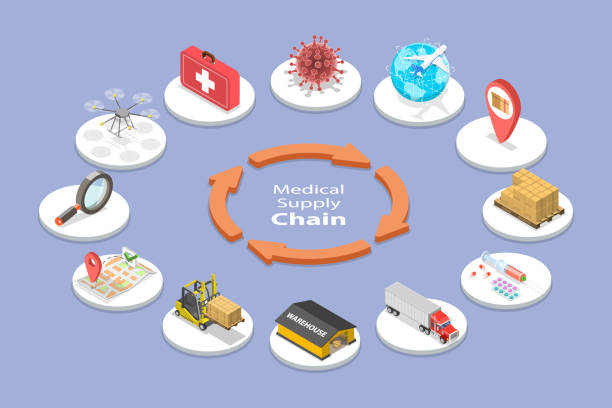Building Resilient Healthcare Supply Chains: Strategies for 2024

Building Resilient Healthcare Supply Chains: Strategies for 2024
Introduction
The COVID-19 pandemic exposed significant vulnerabilities in the global healthcare supply chain, underscoring the need for resilience in the face of disruptions. As we advance into 2024, healthcare executives are prioritizing the development of more robust and flexible supply chain systems. This blog post explores strategic approaches to strengthen healthcare supply chains, ensuring they can withstand future challenges without compromising patient care.
The Importance of a Resilient Healthcare Supply Chain
A resilient supply chain is crucial for maintaining the steady flow of medical supplies, pharmaceuticals, and equipment necessary for effective healthcare delivery. It ensures that healthcare providers have consistent access to essential resources, even during unexpected disruptions.
Challenges in Strengthening Supply Chains
- Global Dependency: Many healthcare systems depend heavily on global suppliers, which can introduce risks related to geopolitical tensions, trade restrictions, and local disruptions.
- Demand Fluctuations: Sudden increases in demand for medical supplies, as seen during pandemics, can strain the supply chain and lead to shortages.
- Logistical Complexity: Managing logistics across diverse and often fragmented supply networks adds layers of complexity, especially in urgent scenarios.
Strategies for Enhancing Supply Chain Resilience
Healthcare executives can employ several key strategies to fortify their supply chains:
- Diversifying Suppliers: Avoid dependency on a single source by diversifying suppliers across different geographic locations. This strategy helps mitigate risks if one region faces disruptions.
- Investing in Technology: Implement advanced technologies like blockchain for tracking and verifying the integrity of supplies, and predictive analytics to forecast demand more accurately and manage inventory efficiently.
- Increasing Stockpile and Buffer Inventory: Maintain strategic reserves of critical supplies to buffer against sudden spikes in demand or supply chain interruptions.
- Strengthening Local Partnerships: Build strong relationships with local and regional suppliers to reduce the lead time and increase the reliability of supply chains.
- Regular Scenario Planning: Conduct regular stress tests and scenario planning exercises to anticipate potential disruptions and develop responsive strategies.
- Enhancing Transparency and Communication: Improve communication channels within the supply chain to ensure timely information flow and collaboration between all stakeholders, including suppliers, logistics providers, and healthcare facilities.
Conclusion
Building a resilient healthcare supply chain is essential not just for managing crises but for the day-to-day reliability of healthcare services. By implementing these strategies, healthcare executives can ensure that their organizations are prepared for future disruptions and are capable of providing uninterrupted patient care. The goal for 2024 and beyond is not only to survive future challenges but to thrive through them by establishing more adaptive, responsive, and robust supply chain systems.



